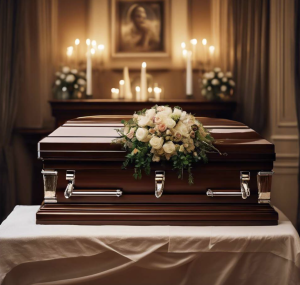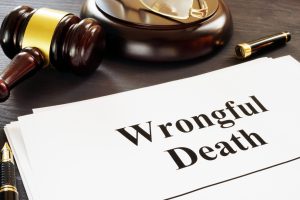When a loved one dies due to unsafe conditions, it can be an incredibly painful experience for the surviving family members.
Not only are they grappling with the emotional fallout of their loss, but they may also face the daunting task of proving that the death was wrongful and directly linked to negligence or unsafe practices.

Understanding how to prove a wrongful death due to unsafe conditions is crucial for families seeking justice and compensation for their loss in this situation.
This article will provide an in-depth look at the steps involved in proving such a case, the legal framework surrounding wrongful death lawsuits, and the importance of gathering evidence.
Understanding Wrongful Death
Wrongful death is a legal term that refers to a situation where a person dies due to the negligence or misconduct of another party.
In the context of unsafe conditions, this could involve various scenarios, such as:
- Workplace accidents: Unsafe working environments leading to fatal accidents.
- Premises liability: Injuries or deaths occurring on someone else’s property due to unsafe conditions, such as broken staircases or inadequate safety measures.
- Product liability: Deaths resulting from defective or unsafe products.
- Medical malpractice: Fatalities caused by negligent medical practices or unsafe conditions in healthcare settings.
In each case, the surviving family members may have grounds for a wrongful death claim if they can demonstrate that unsafe conditions caused the death and that those conditions were the result of negligence.
Legal Framework for Wrongful Death Claims
To successfully prove a wrongful death claim, particularly one related to unsafe conditions, it’s essential to understand the legal framework governing such cases.
While laws can vary by jurisdiction, there are common elements that must typically be established:
- Duty of Care: The defendant (the party being accused of negligence) had a legal obligation to ensure the safety of the victim. This could be an employer ensuring a safe working environment, a property owner maintaining safe premises, or a manufacturer ensuring their products are safe.
- Breach of Duty: The defendant failed to meet that duty of care. This means that the unsafe conditions were a result of negligence, either through action or inaction.
- Causation: There must be a direct link between the unsafe conditions and the death. This means proving that the unsafe conditions were a substantial factor in causing the fatal incident.
- Damages: The surviving family members must demonstrate that they suffered damages as a result of the death. This could include medical expenses, funeral costs, lost wages, and non-economic damages such as pain and suffering.
Steps to Prove a Wrongful Death Due to Unsafe Conditions
1. Gather Evidence
The first step in proving a wrongful death due to unsafe conditions is to gather as much evidence as possible.
This evidence can include:
- Medical Records: Obtain medical records that document the victim’s injuries and cause of death. This can help establish the direct link between the unsafe conditions and the fatality.
- Accident Reports: If applicable, collect any accident reports filed by law enforcement or regulatory agencies. These reports can provide insights into the circumstances surrounding the incident.
- Witness Statements: Speak to witnesses who were present at the time of the incident. Their accounts can help corroborate the details of the unsafe conditions and the events leading to the death.
- Photographs and Videos: Take photographs or videos of the unsafe conditions if possible. Visual evidence can be powerful in demonstrating the hazards that contributed to the death.
- Maintenance Records: For premises liability cases, gather records that show whether the property was properly maintained. This can include inspection logs, repair records, and maintenance schedules.
2. Consult with Experts
In many wrongful death cases, especially those involving complex issues like workplace safety or medical malpractice, it may be beneficial to consult with this Atlanta wrongful death lawyer with the experience to help you determine the strength of your case.
These professionals can provide valuable insights and testimony that can strengthen your case.
- Safety Experts: These individuals can assess the unsafe conditions and provide expert opinions on how they contributed to the death.
- Medical Experts: In cases involving medical malpractice, consulting with medical professionals can help establish whether the standard of care was met.
- Accident Reconstructionists: For cases involving accidents, these experts can recreate the incident to better understand how the unsafe conditions played a role.
3. Establish Negligence
To prove a wrongful death claim, you must demonstrate that the defendant acted negligently.
This involves showing that they failed to meet their duty of care.
Evidence that can support claims of negligence includes:
- Lack of Safety Protocols: If the defendant fails to implement necessary safety protocols or regulations, this can be a clear indication of negligence.
- Previous Complaints: Documented complaints about the unsafe conditions before the incident can demonstrate that the defendant was aware of the risks but failed to address them.
- Industry Standards: Compare the defendant’s actions to industry standards. If they did not follow established safety guidelines, it can strengthen your case for negligence.
4. Prove Causation
Establishing causation is critical in a wrongful death claim.
You must prove that the unsafe conditions were a direct cause of the death.
This often involves:
- Medical Testimony: Expert medical testimony can help establish that the injuries sustained due to unsafe conditions led directly to the death.
- Linking Evidence: Use the evidence gathered to create a timeline and narrative that connects the unsafe conditions to the fatal incident.
5. Document Damages
Finally, it’s essential to document all damages resulting from the wrongful death.
This can include:
- Economic Damages: These may encompass medical expenses, funeral costs, and lost income that the deceased would have provided to the family.
- Non-Economic Damages: These can include pain and suffering, loss of companionship, and emotional distress experienced by the surviving family members.
6. File a Claim

Once you have gathered evidence, consulted experts, and established negligence and causation, the next step is to file a wrongful death claim.
This typically involves:
- Consulting an Attorney: It’s highly advisable to work with a wrongful death attorney who has experience in cases involving unsafe conditions. Talk to this Atlanta wrongful death lawyer at Wetherington Law Firm. They can help guide you through the legal process, ensure that all necessary documentation is filed, and represent your interests in negotiations or court.
- Filing the Claim: Your attorney will prepare and file the necessary legal documents with the appropriate court. This includes a complaint outlining the details of the case, the parties involved, and the relief sought.
- Negotiation and Settlement: In many cases, wrongful death claims may be settled out of court. Your attorney will negotiate with the defendant’s insurance company or legal representatives to reach a fair settlement.
- Trial: If a settlement cannot be reached, your case may proceed to trial. Your attorney will present the evidence, call witnesses, and make arguments to demonstrate that the defendant is liable for the wrongful death.
Conclusion
In conclusion, proving a wrongful death due to unsafe conditions is a thorough process that requires careful attention to detail, thorough investigation, and a strong understanding of legal principles.
By gathering evidence, documenting unsafe conditions, and seeking expert testimony, you can build a compelling case that highlights the negligence involved.
Remember, the emotional toll of losing a loved one is immense, and pursuing justice not only honors their memory but also helps prevent future tragedies.
As you navigate this challenging journey, consider partnering with a skilled attorney who specializes in wrongful death cases.
They can provide invaluable guidance, ensuring you understand your rights and options.
While no amount of compensation can truly replace your loss, holding responsible parties accountable can bring a sense of closure and contribute to meaningful change.
Stay persistent, stay informed, and remember that you are not alone in this fight.
Your pursuit of justice is not just for your loved one; it is a step toward safer conditions for everyone.
Together, we can strive to create a world where safety is prioritized, and lives are protected.


Leave a Reply